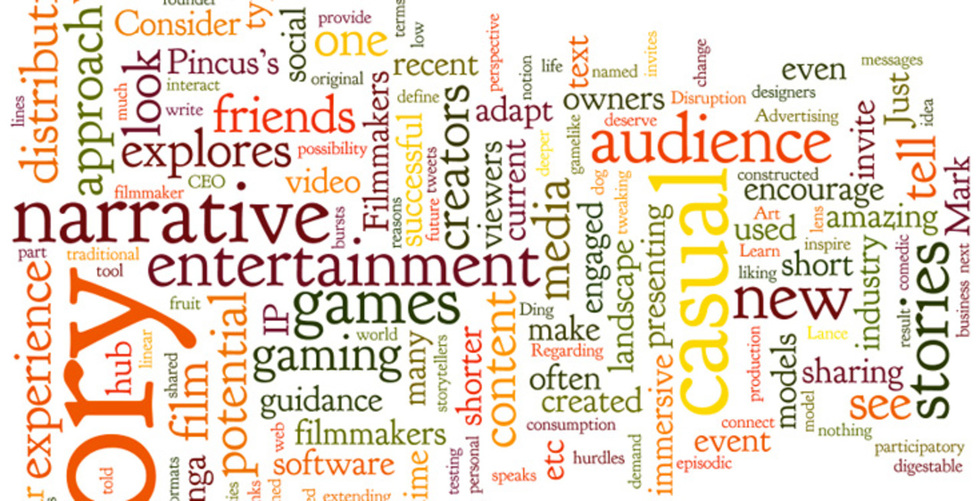
BY MIKE KNOWLTON |
What Filmmakers Can Learn From Mark Pincus’s Dog
The co-founder of social film studio Murmur explores how filmmakers can take inspiration from casual games and integrate social networking mechanics into narrative.

The power of a great story can’t be understated. Look no further than Jeff Gomez’s recent post on this very blog, Reawakening the Grand Narrative. In it he explores the potential of narrative and how it can change the world. But as filmmakers, how do we continue to tell original, compelling stories in the disruptive entertainment landscape in which we find ourselves?

Frank Rose explores the current environment in The Art of Immersion and illustrates how "...a new type of narrative is emerging—one that’s told through many media at once in a way that’s nonlinear, that’s participatory and often gamelike, and that’s designed above all to be immersive."
Disruption can provide amazing opportunities for innovation. Filmmakers who embrace this notion have the potential to:
- tell deeper stories
- connect with a more engaged audience
- own a larger part of the distribution channe
- make more money.
The Internet has created a culture of casual consumption. Attention spans are shorter and interactions are quicker. At the same time content production costs are lower and new distribution channels have been created. Business models have evolved.
How do we adapt?
Let us look at the gaming industry for guidance. Consider the recent creation of an entirely new genre of games: casual games. Companies like Zynga (named after founder and CEO Mark Pincus’s dog) transformed the gaming industry by layering social networking mechanics into the gaming experience. You play casual games with your friends and you do it in short, quick bursts of activity.
A similar approach can be applied to entertainment. Just because it is "casual" does not mean it has to be simplistic. Consider the possibility of an episodic film that blends narrative and viewer interactivity while presenting it through the lens of social media. With this approach the writer invites viewer interaction and scripts the narrative to support and encourage liking, sharing, and inviting friends. The story lines are constructed for virality and growth.
The possibilities are intriguing:
- A cliffhanger could be used to inspire viewers to invite new friends to see the resolution.
- A comedic situation could encourage sharing (nothing is shared more than a picture with a funny caption).
- A dramatic story could invite viewers to share their perspective on a past event in the story or even a similar event in their own life.
To create such a film one would write the narrative for bite-sized chunks, perhaps even shorter than the traditional 3-minute rule of web video. It would include different forms of media to tell the story (text, images, video, audio, tweets, SMS text messages, etc).
 A cross-media story hub would be used for distribution. Simon Pulman explores the idea of a story hub on his blog Transmythology to make content easily accessible and digestable. This model helps the creators, IP owners, and most importantly the audience.
A cross-media story hub would be used for distribution. Simon Pulman explores the idea of a story hub on his blog Transmythology to make content easily accessible and digestable. This model helps the creators, IP owners, and most importantly the audience.
Following this line of thinking we begin to see producing stories in terms of software development. There are versions - 1.0, 2.0, etc. Zynga is constantly testing its casual games. This is one of the many reasons they are so successful. Experimental filmmaker Lance Weiler often speaks of “R&Ding” aspects of his stories. Just look at how Pandemic is being rolled out - first a short film, then a live experience...what next? He is tweaking, extending, and improving it with each release.
Regarding business models, again we can look to the casual gamers for guidance. Advertising and brand sponsorship are the low hanging fruit. The real potential of this approach is in virtual goods (such as a tool that allows you to access a story extension) and presenting a blend of free/premium content.
Viewers demand and deserve to interact with the story. When this type of immersive story is successful the result is a much more personal audience experience. For creators and IP owners it means a more engaged and committed audience.
So we adapt.
We are no longer linear storytellers. We are story architects, software designers, experience creators, and interactive filmmakers. We see the current entertainment landscape not as a series of hurdles, but as an amazing time of opportunity where we can all help shape and define the entertainment formats of the future.